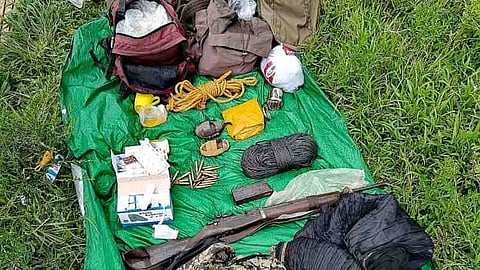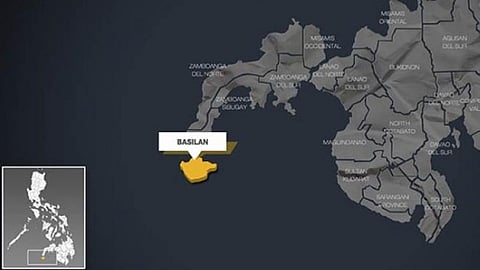From the Philippine News Agency (Jan 6, 2025): Gov’t forces seek to end terror financing in Western Visayas (By Nanette Guadalquiver)
 COLLARED. The arrest of Dharyl Albañez (left), accused of terrorism financing, in La Carlota City, Negros Occidental, on Jan. 2, 2024. He is one of the three facing terrorism financing charges before the Regional Trial Court Branch 31 in Iloilo City, arrested in the province on the same day. (Photo courtesy of Negros Occidental Police Provincial Office)
COLLARED. The arrest of Dharyl Albañez (left), accused of terrorism financing, in La Carlota City, Negros Occidental, on Jan. 2, 2024. He is one of the three facing terrorism financing charges before the Regional Trial Court Branch 31 in Iloilo City, arrested in the province on the same day. (Photo courtesy of Negros Occidental Police Provincial Office)BACOLOD CITY – Top officials of the Philippine National Police and the Philippine Army in Western Visayas welcomed the arrest of the three individuals accused of terrorism financing in Negros Occidental.
In a statement on Monday, Brig. Gen. Jack Wanky, director of Police Regional Office (PRO)-6, said terrorism financing is the lifeblood of the operations of the Communist Party of the Philippines-New People’s Army-National Democratic Front (CPP-NPA-NDF).
“It remains the single, most utilized strategy in their desperate bid to overthrow our democratic government. Cutting the source and prosecuting those who facilitate the generation of these funds will put an end to the CPP-NPA-NDF,” he added.
Joint police and military personnel served warrants of arrest to Dharyl Albañez, 41; Perla Pavillar, 57; and Federico Salvilla, 63, all members of the Paghidaet sa Kauswagan Development Group Inc. based in Kabankalan City, in separate operations on Jan. 2.
Albañez was first arrested in La Carlota City, followed by Pavillar in Cauayan town, and Salvilla in the municipality of Pulupandan.
Maj. Gen. Marion Sison, commander of the 3rd Infantry Division (ID), said the arrest is “a crucial step in curbing the flow of funds and resources” to the CPP-NPA-NDF.
“The 3ID recognizes the insidious nature of this terrorist financing network, which operates through various front organizations disguised as legitimate entities,” he said in a separate statement.
Sison said these groups “exploit both international and local sources to provide vital material, financial and logistical support to sustain terroristic activities and exploitation of communities in far-flung areas.”
Last December, the three accused were among the five individuals charged by the Department of Justice with violation of Section 8 of Republic Act 10168 or the Terrorism Financing Prevention and Suppression Act of 2012 before the Regional Trial Court Branch 31 in Iloilo City.
Both Albañez and Salvilla were charged with two counts, while Pavillar, with three counts, with a bail of PHP200,000 for each count.
In a statement posted on Facebook on Sunday, the Defend NGOs Alliance said Albañez has already posted a bail of PHP400,000.
The two other accused were Clarissa Ramos and Felipe Levy Gelle.
The complaints were filed by the PRO-6, which is part of the Special Task Group on Countering Communist Terrorist Resource Generation for Region 6 (STG-CCRG), before the DOJ, which conducted the preliminary investigation proceedings before elevating the cases before the court.
“We stand firmly behind the STG-CCRG’s move to expose and dismantle these terror-financing networks, ultimately depriving the (CPP-NPA-NDF) of the resources they need to recuperate and resurge after suffering major debacles,” Sison said.
In a separate statement, the Joint Regional Task Force to End Local Communist Armed Conflict-6 said, “the government’s task is to unmask these groups and to uncover their schemes so that the CPP-NPA-NDF will eventually lose their source of funds to support their terrorism-related activities.”
“With the arrest and the prosecution of those engaged in terrorism financing, we are confident that Western Visayas will soon break free from this menace,” it added.
The filing of the cases against the five accused from Negros Occidental followed the landmark conviction of Ian Arevallo, a taxation unit member of the CPP-NPA-NDF Komiteng Rehiyon Panay, who pleaded guilty to being an accomplice in terrorism financing, before the RTC Branch 2 in Kalibo, Aklan in September last year.
https://www.pna.gov.ph/articles/1241099













